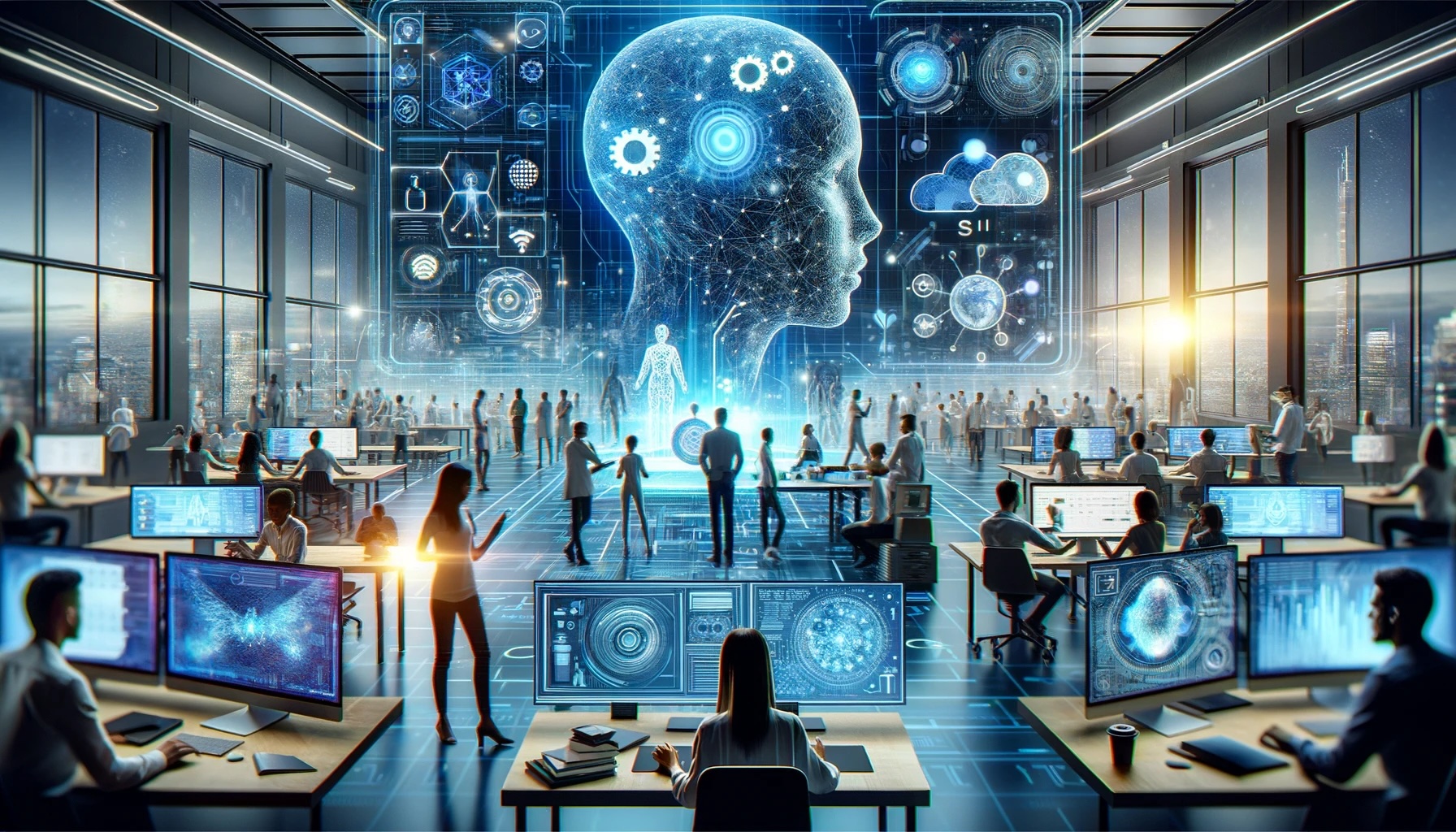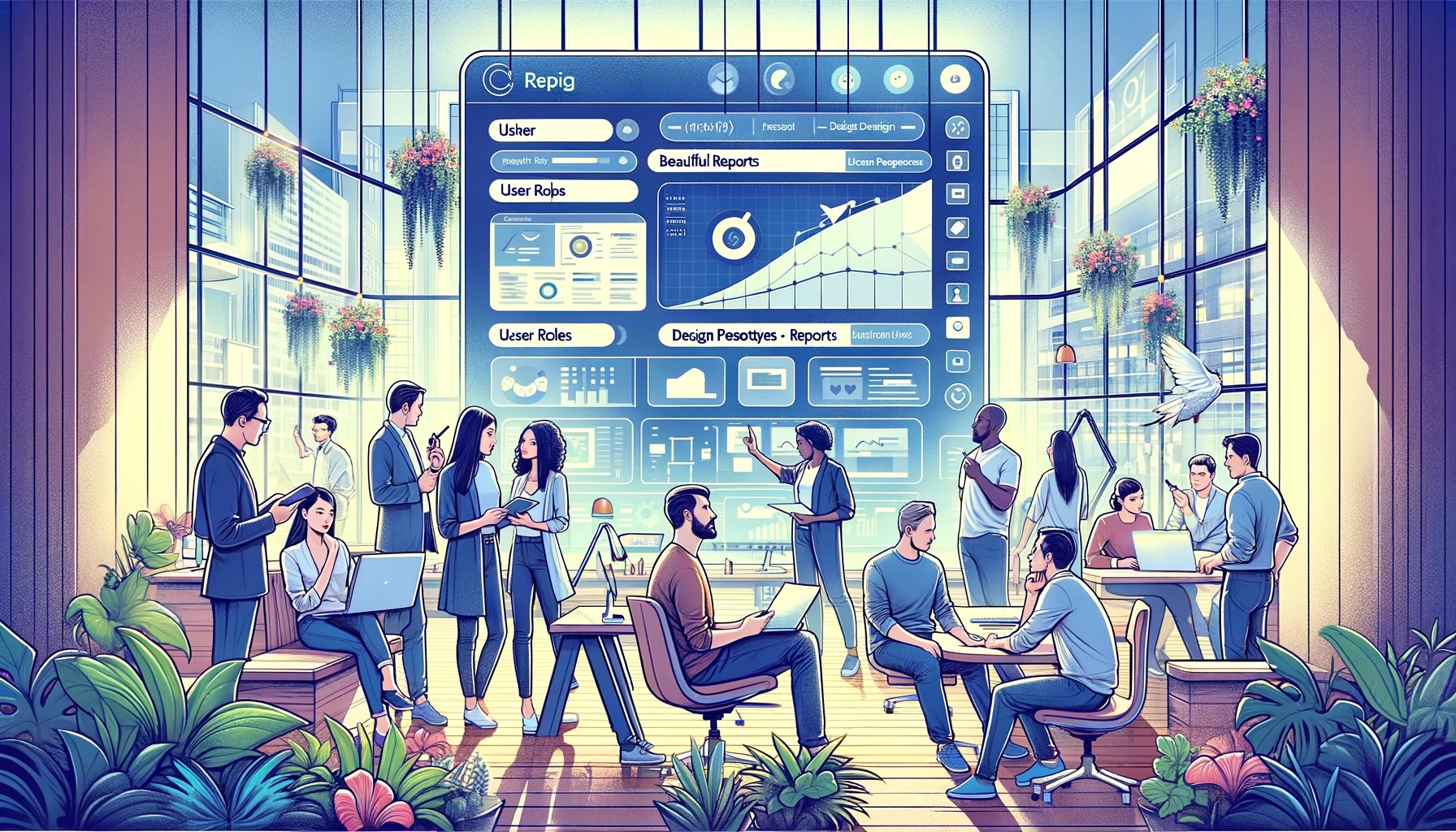Introduction
The digital landscape is continuously evolving, and with it, the disciplines of User Experience (UX) Design and Artificial Intelligence (AI) are intersecting in increasingly complex ways. UX design focuses on creating intuitive, efficient, and enjoyable experiences for users interacting with digital products, while AI involves the development of systems that can perform tasks typically requiring human intelligence. The fusion of these fields promises to revolutionize the way we design and interact with technology. As AI continues to advance, it brings both remarkable opportunities and significant challenges to the realm of UX design. This blog explores the future of UX design in the context of AI, weighing the benefits and drawbacks to provide a comprehensive outlook on this dynamic intersection.
The Intersection of UX Design and AI
AI’s integration into UX design is not a recent phenomenon. For years, AI has subtly influenced the way designers approach their work. Early implementations included basic automation and analytics tools that helped designers understand user behavior and preferences. Today, AI’s role in UX design is far more sophisticated, encompassing everything from personalized user experiences to advanced predictive analytics.
Current trends in AI-driven UX design highlight the technology’s ability to create highly customized experiences for users. Machine learning algorithms analyze vast amounts of data to identify patterns and preferences, enabling designers to tailor interfaces to individual users. This level of personalization was previously unattainable, marking a significant leap forward in the user experience field.
Benefits of AI in UX Design
Personalization and Customization
One of the most significant advantages of AI in UX design is its ability to deliver highly personalized experiences. By analyzing user data, AI can identify individual preferences and behaviors, allowing designers to create interfaces that cater specifically to each user. This level of customization enhances user satisfaction and engagement, leading to higher retention rates and more successful digital products.
Efficiency and Speed
AI-driven tools can automate many aspects of the design process, significantly increasing efficiency and speed. Tasks that once required hours of manual effort, such as wireframing or prototyping, can now be completed in a fraction of the time using AI-powered software. This automation not only saves time but also allows designers to focus on more creative and strategic aspects of their work.
Enhanced Decision Making
AI provides designers with data-driven insights that inform better design decisions. By analyzing user behavior and feedback, AI can highlight which elements of a design are working well and which need improvement. This empirical approach to design helps ensure that decisions are based on concrete data rather than intuition alone, leading to more effective and user-friendly products.
Real-time Feedback and Improvements
AI-powered user testing tools can provide real-time feedback, allowing designers to make immediate adjustments to their designs. This capability is particularly useful during the iterative design process, where rapid prototyping and testing are crucial. AI can simulate user interactions and identify potential issues before a product is launched, reducing the risk of costly post-launch fixes.
Challenges and Concerns
Ethical Considerations
The integration of AI in UX design raises several ethical concerns, particularly around privacy and data security. AI systems often rely on vast amounts of user data to function effectively. Ensuring that this data is collected, stored, and used ethically is paramount. Designers must navigate the delicate balance between leveraging data for personalization and respecting user privacy.
Job Displacement
As AI takes on more tasks traditionally performed by human designers, there is a growing concern about job displacement. While AI can enhance efficiency and productivity, it also threatens to reduce the demand for certain design roles. The industry must address these concerns by fostering a collaborative relationship between AI and human designers, ensuring that technology complements rather than replaces human creativity.
Over-reliance on AI
There is a risk that designers may become overly reliant on AI, leading to a reduction in human creativity and innovation. While AI can provide valuable insights and automate routine tasks, it cannot replicate the nuanced understanding and creative intuition of a human designer. Striking a balance between leveraging AI’s capabilities and maintaining human creativity is crucial for the future of UX design.
Bias in AI
AI systems are only as good as the data they are trained on. If the training data contains biases, the AI will inevitably replicate those biases in its outputs. This can lead to designs that are unintentionally exclusionary or discriminatory. Ensuring fairness and inclusivity in AI-driven design requires careful attention to the quality and diversity of training data, as well as ongoing efforts to identify and mitigate bias.
The Future of UX Design with AI
Emerging Technologies and Innovations
The future of UX design with AI is brimming with potential. Technologies such as virtual reality (VR) and augmented reality (AR) are already beginning to reshape the user experience landscape. AI’s role in these technologies is pivotal, enabling more immersive and interactive experiences. For instance, AI can enhance VR environments by dynamically adjusting to user behavior, creating a more engaging and personalized experience.
Predictive Design
Predictive design is another exciting frontier in AI-driven UX. By analyzing historical user data, AI can anticipate user needs and behaviors, allowing designers to create interfaces that proactively address user requirements. This forward-thinking approach can significantly enhance the user experience, making interactions more intuitive and seamless.
AI as a Collaborator, Not a Replacement
The future of AI in UX design is not about replacing human designers but about enhancing their capabilities. AI can act as a powerful collaborator, providing designers with tools and insights that augment their creativity. By automating routine tasks and offering data-driven recommendations, AI frees up designers to focus on more strategic and innovative aspects of their work.
Inclusive Design with AI
AI has the potential to make digital products more accessible and inclusive. By analyzing diverse user data, AI can identify and address the needs of underrepresented or marginalized groups. This capability is crucial for creating products that are truly accessible to all users, regardless of their abilities or backgrounds.
Case Studies
Successful Integration of AI in UX Design
Several industry leaders have successfully integrated AI into their UX design processes, setting new standards for the field. For example, Spotify uses AI to analyze user listening habits and provide personalized music recommendations, creating a highly tailored user experience. Similarly, Netflix employs AI to suggest content based on user preferences, enhancing viewer engagement and satisfaction.
Lessons Learned from Failures
However, not all AI implementations in UX design have been successful. There have been instances where AI-driven designs have failed to meet user expectations or have introduced unintended biases. These failures underscore the importance of careful planning, continuous testing, and ethical considerations in AI-driven design. By learning from these missteps, designers can avoid common pitfalls and ensure that AI enhances rather than hinders the user experience.
Conclusion
The future of UX design is inextricably linked with the advancements in AI technology. While AI offers numerous benefits, including enhanced personalization, efficiency, and decision-making, it also presents significant challenges, such as ethical concerns, job displacement, and the risk of bias. The key to navigating this complex landscape lies in fostering a collaborative relationship between AI and human designers. By leveraging AI as a tool to augment human creativity and innovation, designers can create more intuitive, inclusive, and engaging user experiences. As we look to the future, it is crucial to adopt a balanced approach that embraces the potential of AI while remaining mindful of its limitations. In doing so, we can ensure that the future of UX design is both technologically advanced and human-centered.



